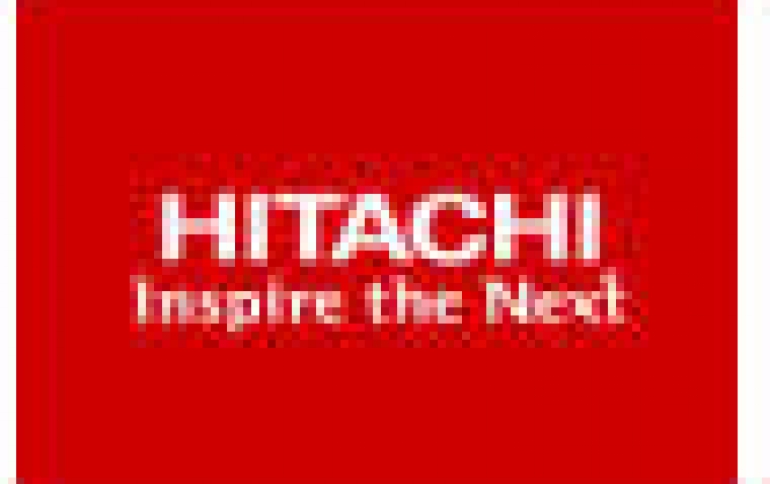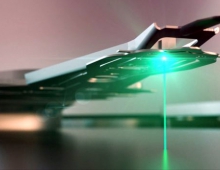
Hitachi claims leap in drive density
Hitachi Global Storage will come out with hard drives containing 230 gigabits of data per square inch, the company is expected to announce Monday, and that means 20GB iPod minis.
The company is expected to release the denser drives in 2007.
The density breakthrough represents a refinement in perpendicular recording. Today, hard drives record and store data in a longitudinal fashion, with the read/write heads scanning over a horizontal plane. In perpendicular recording, data bits are aligned vertically, allowing for more data to be squeezed into a finite area.
Put another way, data will go from being stored on a two-dimensional XY grid to living in a three-dimensional XYZ space.
"We're redesigning the head and disc quite significantly," said Bill Healy, senior vice president of product strategy and marketing at Hitachi. "All we have done is longitudinal recording in hard drives since the 1950s."
Hitachi will actually come out with drives that employ perpendicular-recording techniques toward the end of this year, but these first drives won't be nearly as dense--holding only around 130 gigabits to 150 gigabits per square inch--and will mostly serve as a transitional technology, he said. Longitudinal recording drives are expected to top out at 120 gigabits per square inch.
Widespread commercial deployment of perpendicular drives will occur with the 230 gigabit per square inch drives in 2007, he said. The technology will allow Hitachi to come out with a 20GB microdrive, which has a diameter of 1 inch, and a 3.5-inch drive for PCs and digital video recorders that will hold a terabyte.
Currently, microdrives top out at 6GB while home servers with a terabyte of storage typically have several drives. (While the drive material is measured in gigabits, the drives themselves are measured in gigabytes: 8 gigabits equals 1 gigabyte.)
Within five to seven years, increasing performance with perpendicular recording will likely lead to microdrives with 60GB of storage capacity, the company said.
To get early experience with its 230 gigabit per square inch drives, Hitachi is conducting field tests with a few hundred employees, customers and outside engineers.
"We've got a babysitting program running in the back to see how the hard drives are doing," Healy said. "We are building up our understanding of our quality and reliability."
Perpendicular recording technology, in part, owes its heritage to Valdemar Poulsen, a 19th century Danish scientist who magnetically recorded sound in a similar fashion.
Competitors Seagate, Toshiba and others are also working on perpendicular-recording drives. While some of the larger companies may make the transition at roughly the same time, some of the smaller companies may fall behind, Healy speculated.
"Major transitions are watershed moments," he said.
From NEWS.com





















